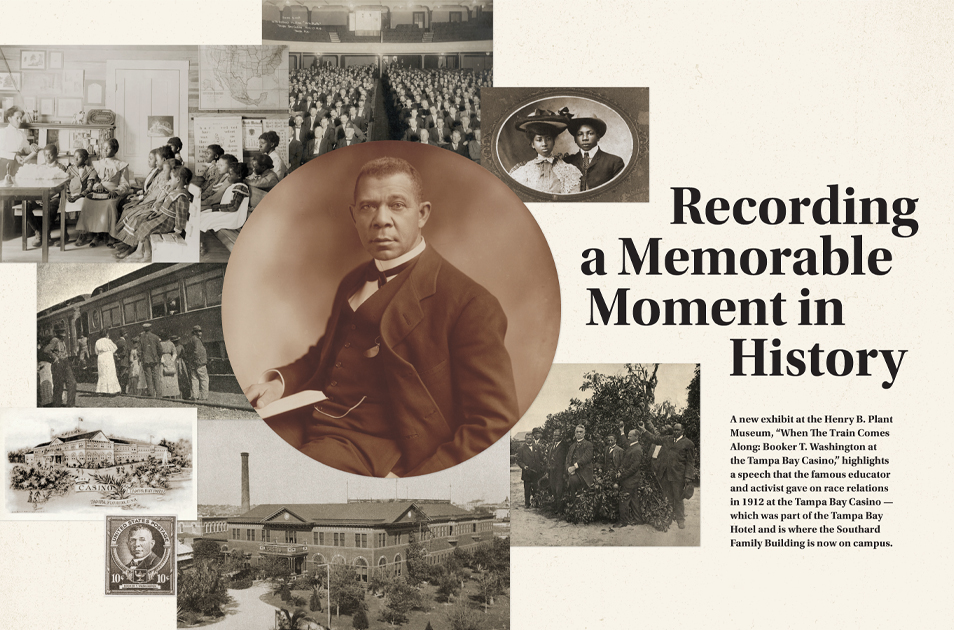Contact us
401 W. Kennedy Blvd.
Tampa, FL 33606-13490
(813) 253-3333
A new exhibit at the Henry B. Plant Museum, “When The Train Comes Along: Booker T. Washington at the Tampa Bay Casino,” highlights a speech that the famous educator and activist gave on race relations in 1912 at the Tampa Bay Casino – which was part of the Tampa Bay Hotel and is where the Southard Family Building is now on campus.

Charles McGraw Groh, associate professor of history, guest curated the exhibit. Photograph: Jessica Leigh
"Whites and Blacks heard different things from the speech, but they were both encouraged to work together. And that message is more important and necessary now than ever."
-David H. Jackson Jr.
This story first appeared in the Fall 2021 UT Journal.
More UT News